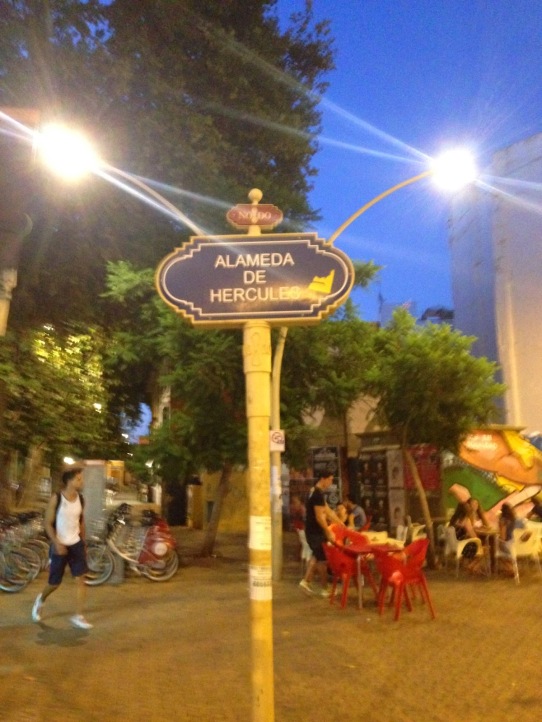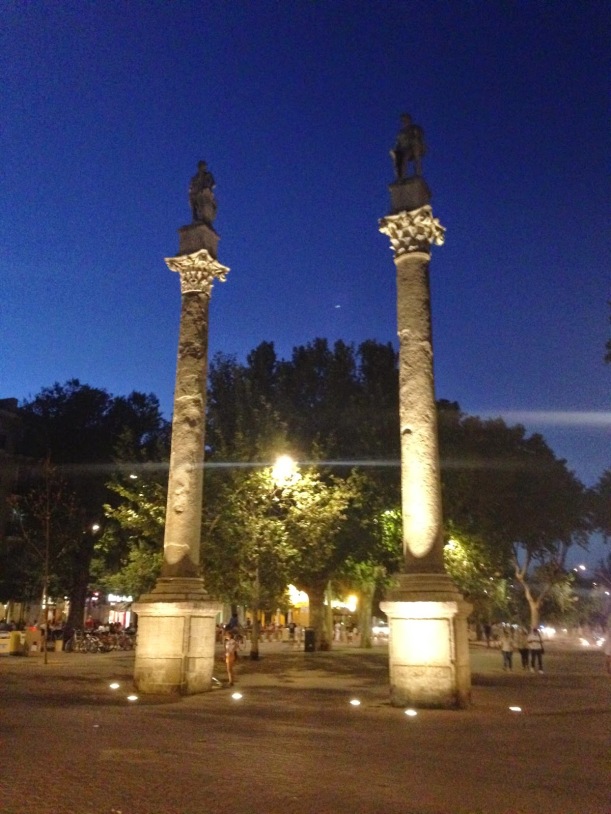9 Best Attractions in Seville, Spain
Considered as the capital of the independent community of Andalucia in Southern Spain, Sevilla (Seville for English speakers) is a picturesque province bursting in color, life and character. Like its fellow Spanish cities of Barcelona, and Madrid, this land situated at the banks of the Guadalquivir, gives proof to the Spanish penchant for beauty, culture and art.
I had the wonderful opportunity to visit Seville recently and no words could describe the emotions that took over me during my one week-visit. Once you arrive in Seville, you will have that certain feeling of calmness and relaxation absent in the megalopolis that is Madrid.
You can take a walk and find small alleys that are so lovely, you can’t help but spend countless minutes there. Or you can go to the city center, and find it absolutely vibrant and alluring, you would never want to leave until the wee hours of the morning.
It’s not just the places that captivated me. Everyone was so laidback here and they indeed observed the siesta, leaving most of the tourist places yours to enjoy for hours. I soaked up the Andalusian sun and let Seville overwhelm me and I can say that it’s one of the best places on Earth.
I took the liberty of compiling the best places to check out in this gorgeous province. Mind you, these are the places that really captivated me. You can check out other travel websites and find other attractions like the Parque Maria Luisa (just-so-so), Plaza de Toros de la Real Maestranza de Caballeria de Sevilla (there was no bullfight so I never got inside) and Torre del Oro (just so-so too) but they are not listed here for the said reasons.
Seville Cathedral
Any visit to Sevilla would not be complete without checking out the Cathedral of Saint Mary of the See or simply Seville Cathedral. Any local, hotel employee or taxi driver would insist that you go here and they have good reason. A mammoth structure located in the center of town, Seville Cathedral is the largest Gothic church in the world and the third largest church of all. Counstruction began in 1402 and it was completed in 1506. Work resumed again when the dome collapsed in 1511.It was declared a UNESCO World Heritage Site in 1987. The bell tower beside the church is called La Giralda and is considered a tourist destination in its own right. The nearby Archivos de Indies housed in the Casa Lonja de Marcaderes is also a heritage site. it houses all the oldest and most important documents of the Spanish empire during the medieval period.
Real Alcazar
This grand Palace will soon be featured in the Games of Thrones series and everyday, the queue is so long. The site of the palace used to be a Moorish fort but was redesigned to be a grandiose structure to house the Spanish monarchs. The Moorish fort stood in 913 AD but construction of Alcazar was formally acknowledged in 1248. It is now the oldest royal palace still in use in Europe. In 1987, it was also registered as a UNESCO World Heritage site.
Ayuntamiento de Seville
The general area around the cathedral is called centro. It is literally the center of all action in Seville. And in this area, you will see the Ayuntamiento de Sevilla and the large plaza around it. By day, it is one of the most beautiful buildings in Seville, with intricate carvings on its facade. By night, the plaza is filled with locals drinking under the moonlight. i think it becomes one of those public spaces for drinking called botellones. The ambiance is electric and if you really wanna experience Seville as a local, and/or meet the locals, here’s one good place to check out.
Plaza de Espana
Oh, wow. That’s literally the first words that came out of my mouth when I saw Plaza de Espana for the first time. It is so grandiose and majestic and huge, I can’t fit it all inside one camera frame. It was built in 1928 in time for the Ibero-American Expo in 1929. The design is a mix of Art-deco and Neo-Mudejar achitecture. It is a semi-circle in shape and there’s a moat that runs through the entire circle. There is also a grand fountain in the middle. The best time to check it out is near sunset when it is not so hot and you can paddle a boat around the moat. This place attracts tourists, families and lovers (for the boat) alike.
Calle Sierpes
If you are after some shopping in Seville, then you must check out Sierpes. Of course the place is littered with the mall El Corte Ingles but where’s the fun in that right? Sierpes is basically a long stretch of road filled with shops, and restaurants, where you can see lots of Sale, or rebajas. You can buy souvenirs, chocolates and some Spanish brands such as Desigual here. It is quite close to the Ayuntamiento de Sevilla so before drinking or having dinner, locals loiter around here.
Metropol Parasol
At the northern end of Calle Sierpes, you can take a right, pass by the Universidad de Seville and marvel at the Metropol Parasol or locally known as Las Setas de Encarnacion or giant mushroom. Located in Seville’s old quarter, it claims to be the biggest wooden structure in the world. It has four levels with levels 1 providing a space for public exhibits and for people to lazy around. During my visit, there was a Jamaican band who did an impromptu reggae set. How cool was that huh? Levels 2-3 have panoramic terraces and a restaurant where you can get the best vantage view (and photos of course) of entire Seville.
Triana
Located at the west bank of the Guadalquivir river, Triana is considered as the gypsy quarter of Seville. Durng previous centuries, sailors and gypsies were relegated to this independent community. Now the place boasts of the best bars, and cervezerias in Seville with a great view of the Torre del oro and the river. By day, you can see and buy the best ceramic tiles. By day, you can drink and party at the numerous nightclubs along Calle Betis, fronting the river. Triana is separated from the rest of Seville by the Guadalquivir and can be reached by the Puente de Triana. Note: you can take a river cruise and see Calle Betis and all of its colorful houses.
Alameda de Hercules
According to Legends, Seville was built by the Greek hero Hercules. This explains, why Seville has a plaza called Alameda de Hercules. The plaza has two pillars each at the north and south end depicting the real pillars in Gibraltar. There is a statue of Hercules on top of one of the towers and there is also a statue of Julius Caesar in remembrance of Rome’s rule over Seville (then called Hispalis). This is a place where people hang around to chat and uwind. There is a children’s playground at one side and around the plaza, there are lots of restaurants, bars and clubs to choose from. I fell in love with it because you can observe the locals and their families here. It is located near the La Macarena district of Seville.
The plaza has two pillars each at the north and south end depicting the real pillars in Gibraltar. There is a statue of Hercules on top of one of the towers and there is also a statue of Julius Caesar in remembrance of Rome’s rule over Seville (then called Hispalis). This is a place where people hang around to chat and uwind. There is a children’s playground at one side and around the plaza, there are lots of restaurants, bars and clubs to choose from. I fell in love with it because you can observe the locals and their families here. It is located near the La Macarena district of Seville.
 The plaza has two pillars each at the north and south end depicting the real pillars in Gibraltar. There is a statue of Hercules on top of one of the towers and there is also a statue of Julius Caesar in remembrance of Rome’s rule over Seville (then called Hispalis). This is a place where people hang around to chat and uwind. There is a children’s playground at one side and around the plaza, there are lots of restaurants, bars and clubs to choose from. I fell in love with it because you can observe the locals and their families here. It is located near the La Macarena district of Seville.
The plaza has two pillars each at the north and south end depicting the real pillars in Gibraltar. There is a statue of Hercules on top of one of the towers and there is also a statue of Julius Caesar in remembrance of Rome’s rule over Seville (then called Hispalis). This is a place where people hang around to chat and uwind. There is a children’s playground at one side and around the plaza, there are lots of restaurants, bars and clubs to choose from. I fell in love with it because you can observe the locals and their families here. It is located near the La Macarena district of Seville.
Calle Amor de Dios
Also located in the alternative side of Seville, the La Macarena is a curious little street called Calle Amor de Dios. I loved this place because this is actually the queer side of Seville. Homosexuality is accepted in Spain and in Europe in general and this little tiny street attracts the local LGBT community. Foreigners with the alternative inclination also flock to this area. You can check out La Bohemia Bar, El Hombro y el Oso (The Man and the Bear), and Men to Men, which is technically located in the adjacent Calle Trajano. But you get the gist.
Seville is indeed a marvelous place. Whether you’re a history geek, an architecture junkie, a partyphile, a traveler or simply a tourist, there is something that will appeal to you. Honestly, Seville is sometimes overlooked in favor of the fancier and flashier Madrid, but there are hidden gems in this place. And it’s up to you to discover them.


























0 comments:
Post a Comment